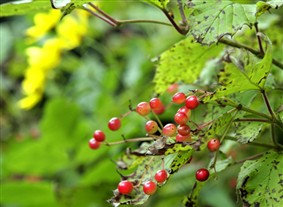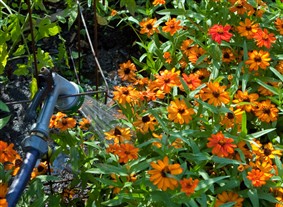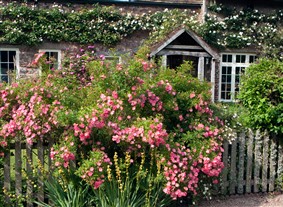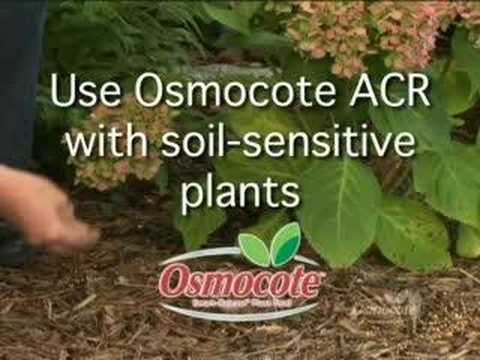Three Edible Shrubs to Plant Now
Views: 5575

Part of the benefit of joining garden organizations is meeting other fellow gardening, shall we say, enthusiasts. They have wonderful recommendations including what edible shrubs are good for the garden.
I met Duncan Brine at the Garden Writers Association Symposium last year in Portland, but it wasn’t until yesterday that I got a peek at his fabulous garden in the Hudson Valley.
Duncan and his wife Julia have transformed their six-acre property into a paradise garden of framed views, vistas, meandering pathways, and places to sit and take it all in. The garden is a study in naturalistic design emphasizing the artistic use of native trees, shrubs, and perennials. As we meandered through the vast garden, we snacked on some ripe edible berries and talked about homemade preserves and jellies.
Here are a few of the edible small trees and shrubs that are just about ready for harvest in the Brine Garden. These are plants you should check out for your own landscape to extend the edible garden beyond the boundaries of the potager.
Cherry Dogwood (Cornus mas Redstone)
Redstone Cornelian cherry dogwood is a small ornamental tree that tolerates part shade. It produces drooping red edible fruits in late summer, which are enjoyed by birds or a few humans out for a walk.
We picked a couple and then tasted them. The fruit was tart, but not unpleasant. Combined with a little sugar and transformed into jelly I imagine it would be delicious on hot buttered toast. Each drupe contains a large central seed, so boil the fruit—skin, seeds, and all—then strain through fine muslin cloth for jelly or use a food mill for jam.
American Cranberry Bush (Viburnum trilobum Wentworth)
American cranberry bush viburnum is native to the United States. Wentworth is an outstanding cultivar that has been selected for its abundant fruit set. The large shrub tolerates some shade and the bright red berries are edible.
I have to confess they weren’t very tasty fresh from the shrub, but I imagined they could be scrumptious in some jam as Michael Dirr suggests. Julia had a different opinion, however. One year she went through the laborious effort of collecting the fruit, adding the sugar, straining the fruit, and boiling the syrup. She said it made the most beautiful red jelly. In the end, they did not prefer the distinctive odor of the fruit, and thus the jelly. They threw the batch out.
I am enormously curious if anyone else has used the native cranberry bush viburnum to make jelly. Let me know your experiences. Don’t let the questionable fruit flavor deter you. The American variety has many qualities that make it a better choice than the non-native European cranberry bush viburnum.
American Elderberry (Sambucus nigra ssp. Canadensis)
American elderberry is native to the United States. You can use the white spring flowers for elderflower cordial, or the purple berries for dark purple jelly in late summer.
We didn’t taste these berries, but we admired them in the garden. I’ve heard you need to cook them before eating. The attractive, lacy, cut leaf foliage of Laciniata, with its drooping dark berries intermingled perfectly with Oak leaf hydrangea and other shrubs in the garden, making a perfect picture even if you never got around to harvesting the berries.
Meet Jennifer Bartley
Jennifer Bartley grew up on a ravine near an ancient Indian mound. She remembers spending glorious childhood days picking wildflowers and playing in an old,…
Jennifer's Recent Posts

Hand Watering the Kitchen Garden








